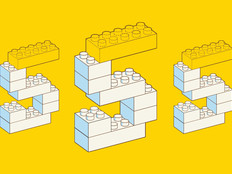Q&A: Dee Childs Explains the State of Residential Networks
In response to ever-increasing bandwidth demands, colleges and universities will continue to improve Wi-Fi and broadband coverage within residence halls, a new report states.
Published by the Association for College & University Technology Advancement (ACUTA), the 2016 State of ResNet Report relies on survey data collected between November 2015 and January 2016 to shed light on higher ed IT leaders’ thoughts on their residential networks (ResNet).
According to an infographic that accompanies the report, higher ed institutions have focused on connectivity for quite some time: From 2012 to 2016, the percentage of colleges and universities offering robust wireless coverage and gigabit speed bandwidth on campus rose from 45 percent to 83 percent.
EdTech: Focus on Higher Education reached out to Dee Childs, chair of the ACUTA Environmental Scanning Committee, to gain deeper insights into that finding and others. As CIO and associate provost of the University of Alabama in Huntsville, Childs has first-hand knowledge of campus network priorities and challenges.
EDTECH: What was the most surprising finding in this year's report?
CHILDS: If, on average, students are bringing seven wired or wired devices to campus, then indeed, we have reached a new digital era of the Internet of Things. The implications are massive, really, pointing to preferences not only for how students socialize and recreate, but also for how they consume their education, create collaborative workgroups with other students, and communicate and work with faculty.
EDTECH: What were the biggest changes since last year?
CHILDS: One of the biggest changes has to do with the change in funding models. Between 2013 and 2015, institutions increasingly funded ResNet via a central funding source, and during that same period, relied less on student fees. However, in 2016, the trend reversed itself and we see that funding for ResNet has started to shift back toward a hybrid model of funding for the ResNet from a combination of central funding, departmental funding and students fees.
EDTECH: Does the data indicate any key trends that show where things are headed?
CHILDS: Clearly, students are big consumers of bandwidth for a wide variety of needs; therefore, adequate bandwidth is a competitive advantage for universities and colleges in recruitment. I don’t know that students are nearly as concerned about privacy and security as their parents, but my prediction is that secure and trustworthy ResNets are increasingly going to become important to parents. Also, the shift from wired to mobility means that residences that provide robust Wi-Fi coverage and bandwidth are also going to have a competitive advantage.
EDTECH: Does the report show that higher ed is on solid footing when it comes to bandwidth management?
CHILDS: Most universities have been using various bandwidth management methodologies for some years. As a consequence of this sophistication, higher ed will continue to do a good job of balancing appetite for additional bandwidth with appropriate techniques for managing bandwidth. That does not mean that higher ed won’t have to make additional investments in bandwidth over time, but it does mean that this can be done strategically in most cases, and not in reaction to an emergency lack of capability.








